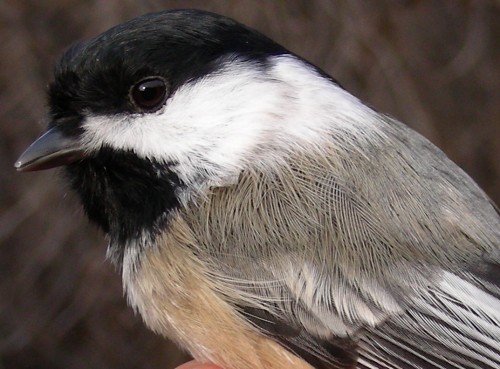|
McGILL BIRD OBSERVATORY |
|||||||||||||||||||||||||||||||||||||||||||||
Welcome to the McGill Bird Observatory weekly report. Click here for a complete listing of our archives. Comments or questions are welcome at mbo@migrationresearch.org.
Bander-in-charge:
Marcel Gahbauer Notes: What a week! Temperatures were above seasonal for the whole week, and ridiculously warm for a few days, with temperatures in the double digits under calm and largely sunny skies. Much nicer, in fact, than on most of the days in October when we were still doing daily migration monitoring! We had to keep checking our calendars to believe it is mid-December. We took advantage of the conditions to enjoy a couple of mornings of banding, plus a couple of additional leisurely walks around the site. All were productive, but Thursday really stood out. Only 6 times previously in the three winters at MBO have we managed to spot 20 species in a day, and never more than 23. Well, on Thursday we got to 21 species in the first 25 minutes, a pace that would be quite decent even during most of migration. Over the course of the morning, we gradually added more, until we ended up with a new record of 29, which we expect will last a long while. Among the unlikely contributors to the list, considering it is mid-December, were over 2500 Canada Geese, nearly 200 Mallards, a baker's dozen of Black Ducks, 4 raptor species (Sharp-shinned, Cooper's, Red-tailed Hawks, and Harrier), and nearly 30 Robins. Also seen were 2 Snow Geese that were spotted hanging out with the Canada Geese most days this week. A surprise on Friday was a Song Sparrow hanging out near the parking circle - unbanded, and therefore probably not one of our locals. The only downside to the warm weather is that the birds don't show much interest in the feeders when natural food sources are available all around. As a result, our banding numbers were fairly modest, but the slower pace enabled several of our eager trainees to continue advancing their skills without feeling too much time pressure, and everyone simply relished the chance to spend a few hours at MBO under these prematurely spring-like conditions. While we haven't been seeing a frenzy at the feeders yet, there are signs that they could get very busy once we get some snow. On Friday morning, an amazingly large flock of American Tree Sparrows was observed foraging along the edge of the neighbouring field, the 43 birds easily representing a record count for that species at MBO in any season. Also, while American Goldfinches have been unusually scarce for several months, they have been seen in larger flocks of late, and some of them were finally banded on Friday. They were a considerate bunch too, offering up HY-male, HY-female, AHY-male, and AHY-female among just 5 birds, for some lovely comparisons to help refresh the memory on these sometimes tricky birds. With the addition of Sharp-shinned Hawk and Herring Gull to this year's winter list, we have now seen 48 species at MBO since the beginning of November. In comparison, we didn't reach that mark until mid-February last winter. However, that may largely reflect the almost complete absence of snow to date, and by the time winter ends (for us) in late March, the totals for the two seasons may well end up being quite similar.
|

